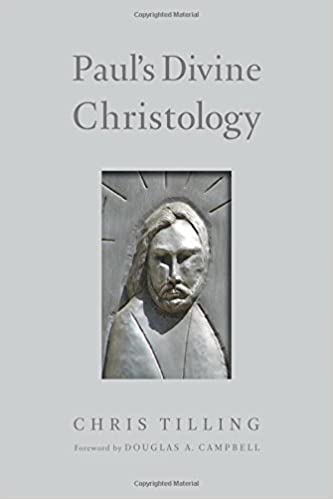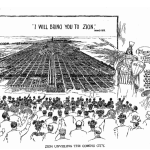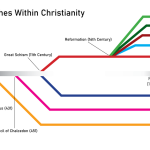C. Tilling, Paul’s Divine Christology, (Eerdmans, 2015, 336 pages).
There are not many doctoral dissertations that move the needle dramatically in a new positive direction in the huge field of Pauline studies. But Chris Tilling’s Paul’s Divine Christology (which originally appeared in print in the WUNT series of J.C.B. Mohr in 2012) is the exception to all such evaluations of the work of budding NT scholars. While it is true that one of the main criteria for evaluating a doctoral thesis is ‘does it make a contribution to the discussion of X’, sometimes with the addition of the word ‘fresh’ before contribution, it is very hard to accomplish something like that in the well-trod roads of Pauline studies, where one is more apt to hear the Qoheleth dictum: ‘there is nothing new under the sun here’. But again, Tilling’s work does set the discussion of whether or not Paul had a ‘divine’ Christology on new footing.
This study accomplishes this impressive feat by: 1) placing the discussion on a broader footing, namely taking into account all the evidence from the capital Paulines about the Christ relationship of Paul and his converts, not just the evidence of cultic worship of Christ or the discussion of Christ’s pre-existence. The study involves detailed contextual exegesis, especially of 1 Cor. 8-10, not just cherry picking of titles or ideas; and 2) making clear that Paul talks about Christian relationship to Christ in the same way that Israel’s relationship to YHWH had always been envisioned and discussed, and 3) getting beyond the rehash of discussing the titles of Christ, once more with feeling.
The net effect of this is that yes indeed there can be found plentiful evidence of an early high Christology in the earliest documents in the NT, Paul’s letters, evidence, as R. Bauckham would put it, that Christ was viewed by Paul as part of the divine identity, and he did not see this as a violation of Jewish monotheism. Indeed, he could include Jesus as Lord within an expanded version of the Shema in 1 Cor. 8, without blinking or fearing huge pushback from fellow apostles such as Peter and others. This comports well with the fact that after Paul’s meetings with the pillar apostles in Jerusalem they had agreed on the essence of the Gospels for both Jews and Gentiles, while they may not have fully agreed about what that meant in regard to the ongoing relationship between Jewish Jesus followers and the keeping of the Mosaic covenant (see Gal. 1-2).
If that were not enough, Tilling takes ample time to show that the supposed early Jewish precedents for including lesser figures within the Godhead (angels, Adam, Enoch, etc.) on closer review really aren’t precedents. For example, it is the way the relationship with the Lord of the Spirits is discussed in the Enoch literature that is analogous to the way Paul talks about the Christ relationship, not the way the relationship of the Son of Man with God is discussed in that literature, and in any case it is not clear that the relevant Enoch literature was known by Paul, not least because the crucial parts of that literature may well post-date Paul’s letters.
Methodologically, there is more to be said because Tilling is rightly wary of the whole history of ideas approach to discussing Pauline Christology, especially when it is accompanied by upward evolutionary spiral thinking (low Christology must be early, high Christology developed later). As Doug Campbell points out in his Forward, this sort of abstracting of ideas from the complex ways Paul talks about the Christ relationship had by believers is the product of post-Enlightenment ways of approach the data, something Paul himself was ignorant and innocent of. In any case, as Martin Hengel showed long ago, and before him Lightfoot, if we are actually evaluating trends in early Christian thinking it would be more plausible to think of the high Christology being early and continuing on later, for instance in the Johannine literature.
Another important methodological point is Tilling’s resistance to the strict dictum that ontology is one thing and function is another. The person of Christ should not be abstracted from his work, for in the Christ relationship he was known through his transformative work not just on the cross, but through the personal transformation of the mind and life of believers through the Holy Spirit. ‘No one can authentically confess Jesus is Lord except by the Holy Spirit’ says Paul. One cannot eliminate the experiential side of things from the evaluation of whether or not Paul had a divine Christology. And besides, few scholars doubt that the Johannine Gospel reflects a divine Christology, and yet that Gospel also stresses the subordination of the Son to the Father, just as Paul does. The subordination discussion does not cancel out Paul’s divine Christology.
I take it for granted that Chris Tilling has demonstrated the essence of his thesis that in the capital Paulines Paul and his converts related to Christ in the same way Israel related to YHWH, and that the implicates of this are that Paul and various converts saw Christ as part of the divine identity, to use Bauckham’s language. Were Larry Hurtado, of blessed memory, still around, he would be sending Chris the coffee mug he sent me and various others as members of ‘the early high Christology club’. But Chris’s crucial insight does not fully take into account that in Paul’s letters Christ relates to God’s people in the same way the OT describes YHWH relating to Israel. To give but one example, in 1 Cor. 10, Paul makes the remarkable statement that when Israel was wandering in the wilderness their source of water turned out to be Christ (‘the rock was Christ’). A simply reading of the Pentateuch in its original language and context does not suggest such a surprising idea, rather it makes clear it was YHWH who provided sustenance and water for Israel. In short, we need the exploration of both sides of the relationship and the way Paul conceives them to support the case for Paul having a divine Christology. The actions of Christ, and the resulting Christ relationship on the part of believers provide a fuller proof that Paul indeed had a divine Christology.













